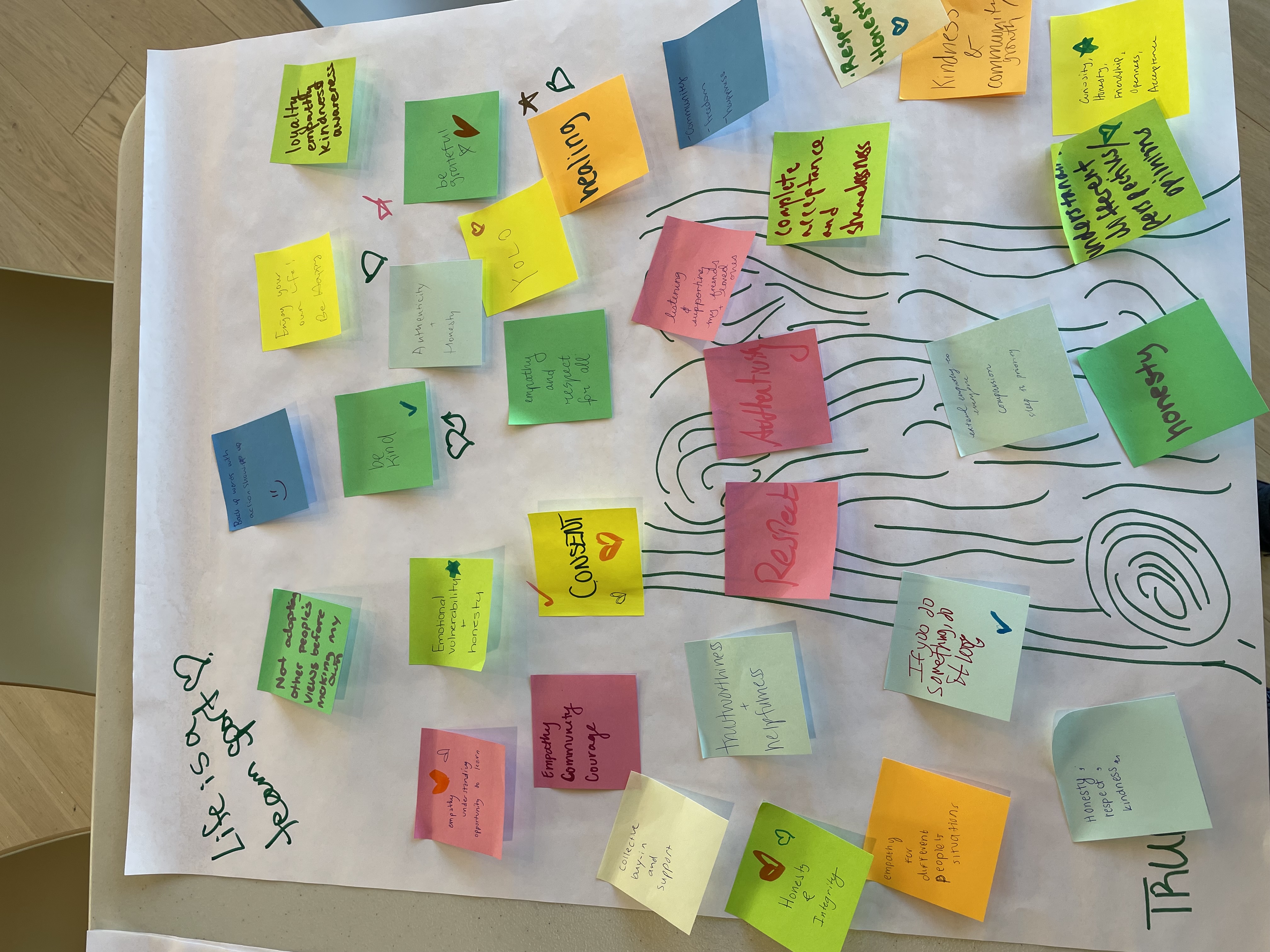To be notified of new resources and to receive important health and wellness updates, as well as our popular weekly affirmations, sign up for Wellness Texts with BWell! It's easy. Just text keyword BWELL to 401-234-0772 to subscribe.

To be notified of new resources and to receive important health and wellness updates, as well as our popular weekly affirmations, sign up for Wellness Texts with BWell! It's easy. Just text keyword BWELL to 401-234-0772 to subscribe.
BWell's Wellness Peer Educators take you on a video tour of their favorite outdoor locations to recharge near campus.
This safety planning tool is a resource to help you proactively consider ways to care for yourself and your community in times of distress. Consider setting aside time to map out the people, practices, and resources that ground you and help to keep you and your community safe.
Fillable PDF: ![]() Tapping in to Self & Community Care.pdf
Tapping in to Self & Community Care.pdf
This resource is meant to help you create a proactive care plan for yourself, and your community, in difficult times. In particular, it may be helpful to think about the ways you want the people in your life to intervene if they see a harmful action being taken towards you. Use this worksheet to choose strategies that are informed by, and prioritize, each person’s strengths, boundaries, and safety. However, while many strategies are available to prevent and respond to harm and this worksheet offers one approach, please remember that harm and harassment is never the fault of those who are being targeted. The responsibility for the harm lies with those who are perpetrating and perpetuating harm and prevention requires them to stop and be responsible for their behavior and actions.
Fillable PDF: ![]() Safety Planning with Friends.pdf
Safety Planning with Friends.pdf
Fulfilling relationships look different for different people and can vary based on your identities, lived experiences, and culture. It can be helpful, to begin with some personal reflection on your individual values and how those connect to what you are looking for in your relationships. Consider using these worksheets to help you define what a fulfilling relationship looks like for you.
Fillable PDF: ![]() Fulfilling Relationships Worksheet.pdf
Fulfilling Relationships Worksheet.pdf
Simple breathing techniques are an effective stress management technique which can be practiced almost anywhere at anytime. Try these two videos for two simple guided breathing practices:
You’re probably already aware how much a professional massage at a spa or health club can help reduce stress, relieve pain, and ease muscle tension. What you may not be aware of is that you can experience many of the same benefits at home or work by practicing self-massage—or trading massages with a loved one.
Try taking a few minutes to massage yourself at your desk between tasks, on the couch at the end of a hectic day, or in bed to help you unwind before sleep. To enhance relaxation, you can use aromatic oil, scented lotion, or combine self-message with mindfulness or deep breathing techniques.
A five minute self-massage to relieve stress:
A combination of strokes works well to relieve muscle tension. Try gentle chops with the edge of your hands or tapping with fingers or cupped palms. Put fingertip pressure on muscle knots. Knead across muscles, and try long, light, gliding strokes. You can apply these strokes to any part of the body that you can reach easily.
For a short session like this, try focusing on your neck and head:
Visualization, or guided imagery, is a variation on traditional meditation that involves imagining a scene in which you feel at peace, free to let go of all tension and anxiety. Choose whatever setting is most calming to you, whether it’s a tropical beach, a favorite childhood spot, or a quiet wooded glen.
You can practice visualization on your own or with a therapist (or an audio recording of a therapist) guiding you through the imagery. You can also choose to do your visualization in silence or use listening aids, such as soothing music or a sound machine or recording that matches your chosen setting—the sound of ocean waves if you’ve chosen a beach, for example.
How to practice visualization:
Close your eyes and imagine your restful place. Picture it as vividly as you can—everything you can see, hear, smell, taste, and feel. Just “looking” at it like you would a photograph is not enough. Visualization works best if you incorporate as many sensory details as possible.
For example, if you are thinking about a dock on a quiet lake:
Enjoy the feeling of your worries drifting away as you slowly explore your restful place. When you are ready, gently open your eyes and come back to the present.
Don’t worry if you sometimes zone out or lose track of where you are during a visualization session. This is normal. You may also experience feelings of heaviness in your limbs, muscle twitches, or yawning. Again, these are normal responses.
